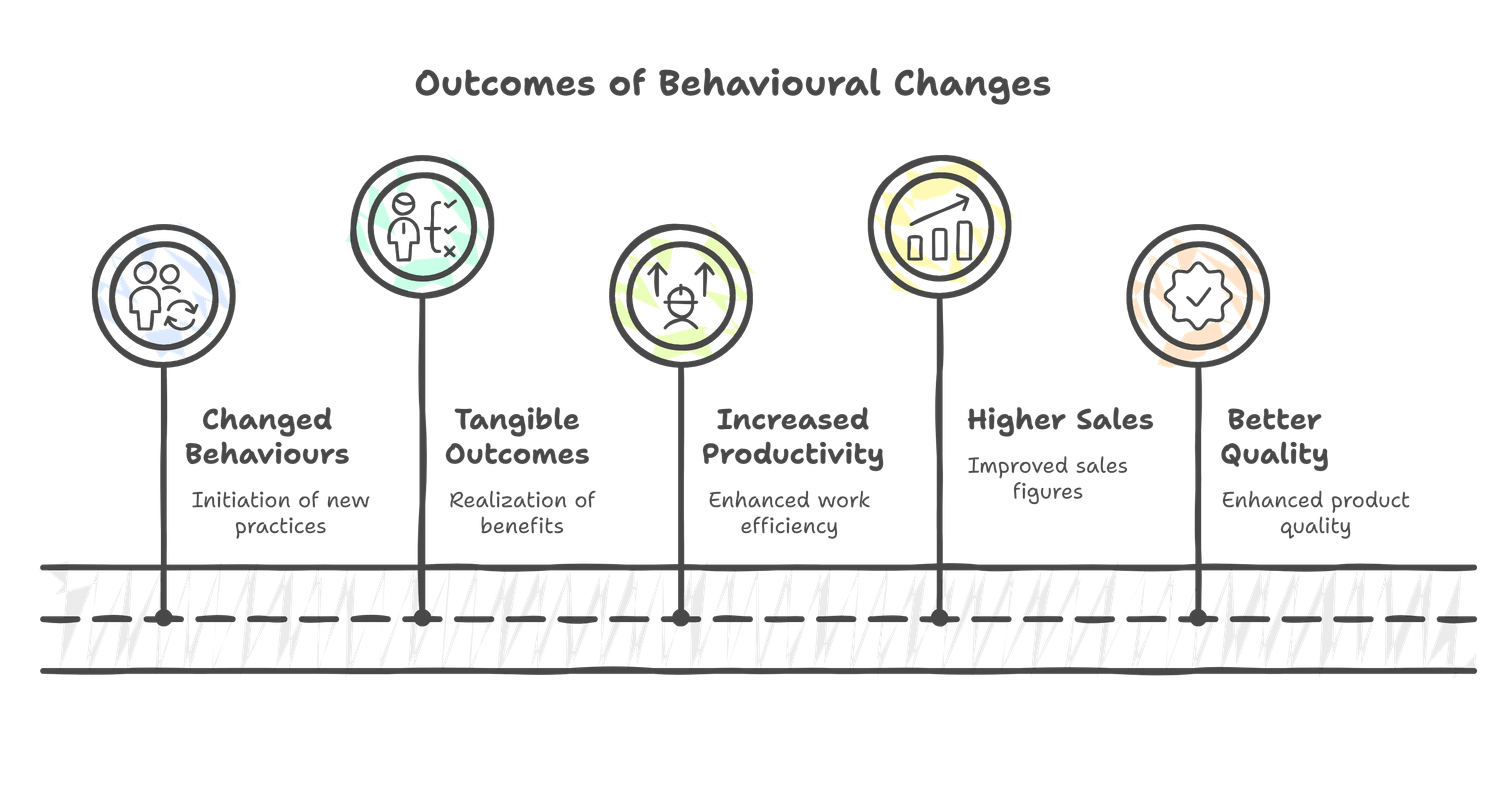All Posts
Phil Kilburn
3 min read
Kirkpatrick and Change Management
Introduction to Kirkpatrick’s Four Levels

When exploring Learning and Development (L&D) initiatives within business change contexts, it is essential to understand Kirkpatrick’s Four Levels of Training Evaluation.
This comprehensive model, developed by Donald Kirkpatrick in the 1950s, serves as a fundamental framework for evaluating and understanding the effectiveness of training programs.
The model encompasses four distinct levels: Reaction, Learning, Behavior, and Results. Let us examine how these levels apply specifically to business change initiatives.
Level 1: Reaction

What It Is: This level gauges how the participants feel about the training they have received. It’s all about their immediate reactions; did they find it engaging, relevant, and useful?
Why It Matters for Business Change: Understanding the reaction is crucial because it gives you the first hint about the training’s potential effectiveness. If aren't enthusiastic about the training, they are less likely to apply what they’ve learned, which can bring bigger issues later in the project.
Level 2: Learning

What It Is: Here, we’re looking at the actual knowledge or skills gained from the training. It’s about measuring the increase in understanding or capability.
Why It Matters for Business Change: This level helps you ensure that the training isn’t just enjoyable but also educational. For change initiatives, it’s vital that participants don’t just like the training but also learn from it, as this knowledge is what will empower them to support and enact the change.
Level 3: Behaviour

What It Is: Behavior evaluation examines the extent to which participants apply what they’ve learned in their work. It’s about the translation of knowledge into action.
Why It Matters for Business Change: This is where the rubber meets the road. For a business change to be successful, it’s not enough for people to know what to do; they must actually do it. Observing changes in behavior post-training can indicate whether the training is effectively contributing to the change process.
Level 4: Results

What It Is: The final level looks at the tangible outcomes resulting from the changed behaviors. This could be in terms of increased productivity, higher sales, better quality, etc.
Why It Matters for Business Change: Ultimately, business changes are about improving organisational performance. This level helps you connect the dots between training and the ultimate goals of the change project, showing the real impact of your L&D efforts. However, it's often the most difficult to measure and requires that measurable objectives were set for the training at the design stage.
Applying Kirkpatrick’s Model to Business Change
Integrating Kirkpatrick’s model into your business change projects can offer a structured approach to training evaluation, ensuring that L&D is not just an afterthought, but a strategic component of the change management process. Here’s how you can make it work:
Plan Ahead: Start with the end in mind. When designing your training, think about what success looks like at each of Kirkpatrick’s levels. This ensures that your training is aligned with your change objectives from the get-go.
Gather Feedback Continuously: Don’t wait until the end of the training to gather feedback. Use real-time surveys, discussions, and observations to gauge reaction and learning as they happen.
Support Post-Training Application: Encourage and support the application of new skills and knowledge in the workplace. This might involve coaching, mentoring, or creating opportunities for practice.
Measure Impact: Use a mix of qualitative and quantitative data to assess behavior changes and business results. This could include performance metrics, but also stories and testimonials that illustrate the change.
Conclusion
Kirkpatrick’s Four Levels of Training Evaluation offers a powerful framework for not just evaluating training but integrating L&D into the fabric of business change. By understanding and applying this model, you can ensure that your training programs are not just educational but transformational, driving the success of your change initiatives.
Remember, the ultimate goal is to drive lasting change. To do this, make learning an integral part of the change, right from the project inception, not an optional extra. If this idea resonates with you, then I’d love to have a chat with you about how we can make it so. Please do get in touch.
Helping forward-thinking SMEs drive transformation by integrating Learning & Development with Change Management from the outset.
Get In Touch
Email: phil@caswelltraining.com
Phone: +44 7858 571823
Based in Manchester, UK
© 2025 All Rights Reserved



